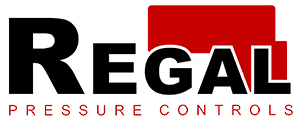Air compressors are essential tools used in various industries and applications to convert power into potential energy stored in pressurized air. One critical component of an air compressor is the pressure switch, which controls the operation of the compressor by monitoring and regulating the air pressure within the system. In this article, we will delve into the parts diagram of an air compressor pressure switch, helping you understand its components and their functions.
1. Pressure Adjustment Knob: The pressure adjustment knob is a prominent feature of the pressure switch. It allows users to set the desired cut-in and cut-out pressure levels for the compressor. By turning the knob clockwise or counterclockwise, the pressure at which the compressor turns on (cut-in pressure) and off (cut-out pressure) can be adjusted. This knob is crucial for tailoring the compressor’s performance to the specific requirements of the task.
2. Cut-In and Cut-Out Contacts: Inside the pressure switch, there are electrical contacts that control the power supply to the compressor motor. When the air pressure drops to the cut-in pressure level, the contacts close, allowing electricity to flow to the motor, which starts the compressor. As the pressure increases and reaches the cut-out pressure level, the contacts open, stopping the compressor motor. This cyclical process ensures that the compressor maintains the desired pressure range.
3. Diaphragm and Bellows: The diaphragm and bellows are integral to the pressure sensing mechanism of the switch. These components respond to changes in air pressure. When the pressure in the compressor tank drops below the cut-in pressure, the diaphragm and bellows expand, activating the contacts and starting the compressor. As the pressure increases to the cut-out level, these components contract, opening the contacts and stopping the compressor.
4. Unloader Valve Connection: Many air compressors are equipped with an unloader valve that releases excess pressure from the compressor head when the motor stops. The pressure switch often has a connection point for the unloader valve. This valve releases the trapped air in the pump head, making it easier for the compressor to restart. The unloader valve connection helps maintain the compressor’s longevity and efficiency.
5. Pressure Gauge Port: Some pressure switches come with a pressure gauge port, allowing users to attach a pressure gauge to monitor the air pressure inside the compressor tank. This feature enables operators to keep a close eye on the pressure levels and ensure they are within the desired range.
Conclusion: Understanding the parts diagram of an air compressor pressure switch provides valuable insights into the functioning of this crucial component. From pressure adjustment to electrical contacts and pressure-sensing mechanisms, each part plays a pivotal role in regulating the compressor’s operation. Proper maintenance and understanding of these components can contribute to the efficiency, longevity, and safety of air compressor systems.
